Carol Newman Cronin's Blog, page 13
June 22, 2023
Wheelchairs to the Worlds: Support Team USA
Shan McAdoo has been a tireless supporter of both the Snipe Class and me for many years, as well as a reliable source of great ideas and excellent conversation. Now he’s been selected to represent the United States at the Para Sailing World Championship in The Hague, Netherlands—and he and his teammates need our support.
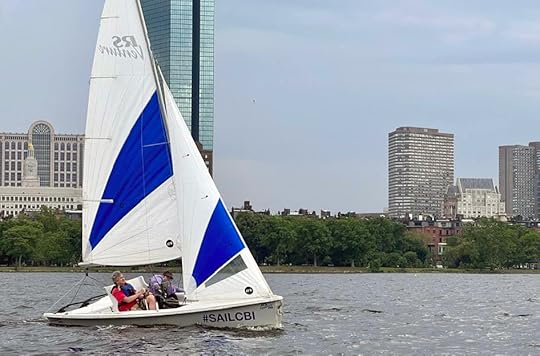 Shan McAdoo and Maureen McKinnon have been training in the RS Venture on Boston’s Charles River. Photo: Kathy Whitehair
Shan McAdoo and Maureen McKinnon have been training in the RS Venture on Boston’s Charles River. Photo: Kathy WhitehairI first shook hands with Shan when he hosted the 2011 Snipe Women’s Nationals in Beverly, MA, but after receiving so many (sarcastic but informative) emails he already felt like a good friend. Long before even those of us who plan ahead were thinking about the regatta, Shan sent reminders to every potential sailor explaining why we should sign up right away. He encouraged and inspired and facilitated and cajoled, but he never once over-promised—even in the depths of frigid February, when we all have a tendency to be unrealistically optimistic about the upcoming sailing season. Here’s his response to the sailor who requested boat boys to help with rigging and launching (a popular Snipe Women’s Nationals tradition): “I am providing ‘yard’ boys and ‘hoist’ boys. You all are on your own for ‘boat’ boys.”
Almost every summer since then, Shan and his sisters have graciously hosted a Snipe regatta at Jubilee Yacht Club, even as the progression of his Multiple Sclerosis made it impossible for Shan to sail the boat himself. Now he’s getting ready for a much bigger challenge: teaming up with Paralympic gold medalist Maureen McKinnon to sail the RS Venture Connect at the 2023 Para Sailing Worlds, which for the first time will be run alongside World Sailing’s championship for the Olympic classes.
“This event looks amazing,” Shan told me in a recent email. “1500 sailors, all of the Olympic classes. I am so excited at seeing it as a competitor. While I am afraid of screwing up on the biggest stage I have ever been on, fear is not the overriding emotion; gratitude is. I am so grateful for this chance to be there.”
Shan and Maureen have never competed in the Venture before, but Maureen is confident that their time together in other doublehanded boats will translate well. “Shan knew me before disability,” Maureen said. “And I knew him before disability since we were both members of Jubilee Yacht Club in our 20s. We have a pretty good vibe together when we sail; we know each other’s roles.”
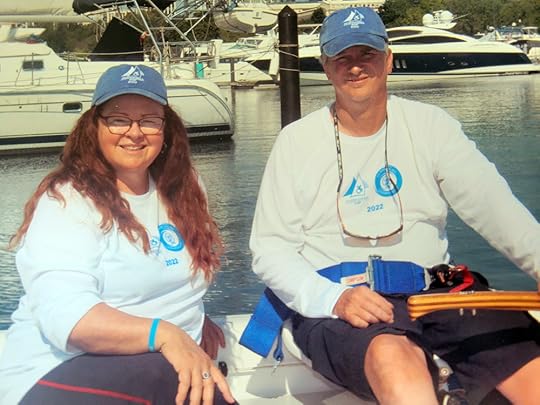 Shan McAdoo and Maureen McKinnon won the two-person division at the 2022 Independence Cup in Chicago.
Shan McAdoo and Maureen McKinnon won the two-person division at the 2022 Independence Cup in Chicago.The pair have been training twice a week at Community Boating Inc (CBI) on Boston’s notoriously fluky Charles River, which Shan hopes will be great prep for the lake that will host the Para Sailing fleets. “The shifty, puffy conditions are helping us learn how to shift gears, tack, stop/start, change weight placement, and handle lines. The folks at CBI have been so supportive, and we’ve done some two-boat training to get us ready.”
The US has selected teams for all four of the Para disciplines. Betsy Alison will sail the Hanse 303 women’s event, John Seepe is signed up for the 2.4 Meter class, and Jim Thweatt is the Hanse 303 Men’s representative. They have attracted a few sponsors, but they haven’t yet met a very modest fundraising goal to cover their expenses. So, as a small payback for all of Shan’s support over the years, I just sent them a tax-deductible contribution. It felt really good to support one of my best supporters for a change!
Want to feel great too? Here’s how to contribute.
The post Wheelchairs to the Worlds: Support Team USA appeared first on Carol Newman Cronin.
June 15, 2023
How To Tell a Memorable Life Story
A few weeks ago, I put together what I still call “a slide show” to share at my Mom’s celebration of life. I initially assumed the process would be much like building any other book talk, but when I visualized the end result I realized it needed to be structured differently; there would be no narrator, and viewers might start watching in the middle or only view a short section. Wherever they jumped in and out, the photos had to be self-explanatory.
It was only several days after it was completed that I realized what putting together this crowd-pleasing show was really like: writing and editing books. Here are my top six takeaways—along with a very important bonus at the end.
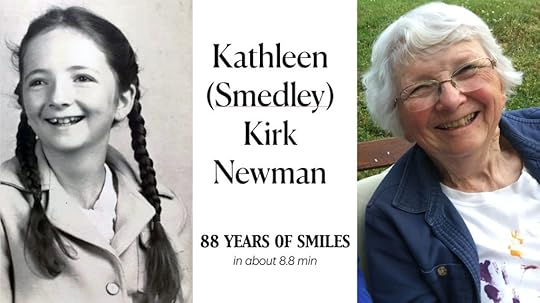 1. Identify the big “why”
1. Identify the big “why” The over-arching theme for this project was completely obvious even before I opened the first draft; capturing Mom’s smile throughout her long and rich life. And—unlike writing books—that theme did not change at all throughout the entire process.
2. Let any smaller themes bubble upThe biggest challenge was how to tell the story of such a long and adventurous life in a very short time frame. Since I had more photos than I could possibly include, I decided to gather several onto each “page” to represent distinct categories. Except for her childhood and wedding, I didn’t worry about chronology; instead I grouped together images that all showed her sailing, or fishing, or working inside or outside the house. (I definitely needed more than one page for the kids and grandkids!)
That timeless structure collapsed years together, as you can see in the Panda images below that united the late 1930s with 1974. It also gave viewers who only saw a few pages a sense of the length and breadth of her life. And once I clued in my siblings (who’d already seen most of the photos I included, just not in this arrangement), they called out their theories for each page’s theme as soon as the first few slides appeared.
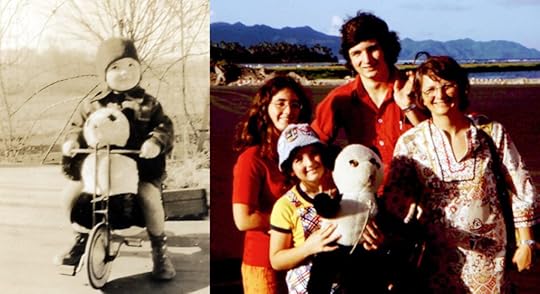 3. Editing matters
3. Editing mattersFor this presentation, I sorted through boxes and boxes of photo envelopes—and the family slides that had already been digitized—and only included the best ones. My initial goal was one photo for every year of Mom’s life (88); thanks to grouping them together in themes, I was able to shoehorn 141 separate images into a loop that played in “about 8.8 minutes.”
4. Patterns unifySetting a default animation for each photo and page created a soothing and consistent rhythm that communicated to viewers how long they had to admire each one. (It also kept me from over-thinking a customized timing.)
5. Eliminate distracting detailsOnce I had the rough draft put together, I noticed several frame edges and weird scanning blobs and purple-hued distortions. I’m glad I took the time to edit those out so that viewers could focus instead on all of the smiles.
6. Include “bookends”Beginning and ending slides made it clear when the loop was “over”—even though it automagically began playing through once more.
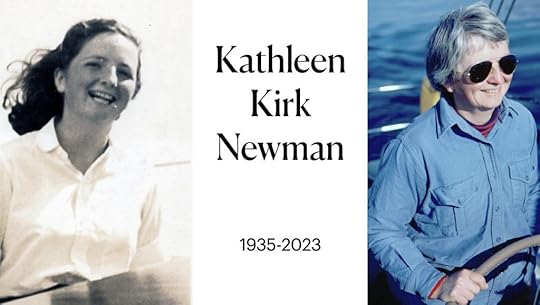
Like any novel I’ve ever written, this project took way longer than I expected. But afterward, the many compliments made me feel like I’d done a good job of telling this incredible story. The photos also unified the unique group that gathered together on that beautiful Sunday afternoon; no matter what part we’d played in Mom’s life or what memories we each had personally, we all got a taste of her many other adventures.
One final thought: for its creator, assembling this show was both therapy and a labor of love. And that’s another commonality with writing and editing any book that will be worth reading!
What lessons would you add to these? Share them in the comments below, or drop me an email. I read every single one, with gratitude.
The post How To Tell a Memorable Life Story appeared first on Carol Newman Cronin.
June 8, 2023
A Books Meet Boats Giveaway: Help Me Celebrate!
Today, June 8, there are two separate worldwide celebrations going on: Women’s Fiction Day, and World Oceans Day. To me, that makes it Books Meet Boats day! Here’s a quick look into each, followed by a limited-time offer to help us all mark this coincidence.
 Women’s Fiction Day
Women’s Fiction DayAccording to the Women’s Fiction Writer’s Association, “Women’s Fiction Day celebrates women’s fiction authors, novels, publishers, book sellers, and most importantly, readers who appreciate women’s fiction and the power of a great story.” More than 50 authors are giving away books today, so I encourage you to check the list.
I have to admit that I have very mixed feelings about celebrating a genre that so many authors and publishers think should be quietly “binned.” Does a term that effectively tells half the reading population to stay away really make sense? I can’t spell out the push-pull of this term nearly as well as Barbara Probst, so here are her three closing questions from a recent post about this “awkward” topic:
Why can’t stories set in the present and framed around the search for self, intimacy, fulfillment—with plots and character arcs—simply be called contemporary fiction, the same way that books set in the past are “simply” called historical fiction?Why are we still using a label based on a bifurcation of literature according to a limited and outdated notion of gender—while also insisting that the label doesn’t have anything to do with the gender of the writer, reader, or protagonist? Shouldn’t the name of a category reflect its meaning? And if it doesn’t, shouldn’t we change the name?Or is the term women’s fiction useful, nonetheless, allowing women writers to claim an important place in the literary landscape? Would abandoning the term mean the loss of an identity we’ve worked hard to attain?There’s much more: Genre and Gender: Grappling With the Awkward Question of “Women’s” Fiction
 World Oceans Day
World Oceans DaySupporting this one is a complete no-brainer. As someone who wants to see and then get out on the ocean every day, at sunrise if possible, I believe we should do everything we can to help this initiative continue and thrive. So here’s my offer: anyone who emails me a receipt before midnight (ET) for a donation of $20 or more to World Oceans Day will receive a free copy of one of my novels (your choice). Make your donation
Happy Books Meets Boats Day! This strange conflux of two totally unrelated worldwide celebrations makes me curious: which one is more important to you? Share your thoughts about women’s fiction and/or the world’s oceans in the comments below, or send me an email. I read every single one, with gratitude.
The post A Books Meet Boats Giveaway: Help Me Celebrate! appeared first on Carol Newman Cronin.
June 1, 2023
Book Review: Beyond That, the Sea
I can’t remember where I heard about Laura Spence-Ash’s debut novel; maybe I spotted her interview on Literary Hub? All I know is that as soon as I realized someone had written historical fiction that was set partly on an island in Maine, I figured I’d better read it. And I’m so glad I did, because I was bowled over by her elegant but effective writing.
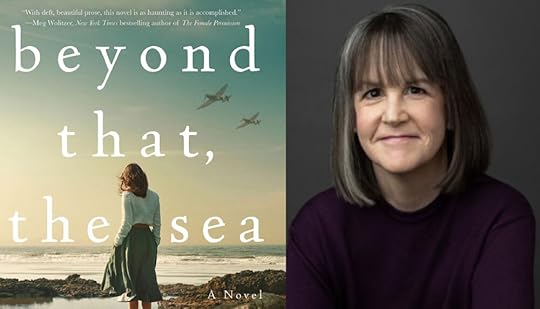
The story centers on Beatrix, an 11-year-old British war refugee who spends 1940-45 with a family in New England after her parents make the agonizing decision that London is too dangerous. There are several other points of view, including both sets of parents and the American “siblings.” The overriding theme is what makes a family, and where we truly “belong.” And yes there’s a happy ending, which while somewhat predictable was definitely not inevitable—since all the characters are so full of humanizing imperfections.
Spence-Ash starts with a prologue, though it wasn’t immediately obvious that it wasn’t “Chapter One.” The bottom margin shows the date, October 1963; the rest of the book then unfolds in chronological order, starting in 1940, with the years shown only in those bottom margins and never specified in the text. I must admit it took me several chapters to even notice that subtle design addition (perhaps because I was too busy inhaling the beautiful sentences and story), but once I did the dates were a big help in grounding where we were in time.
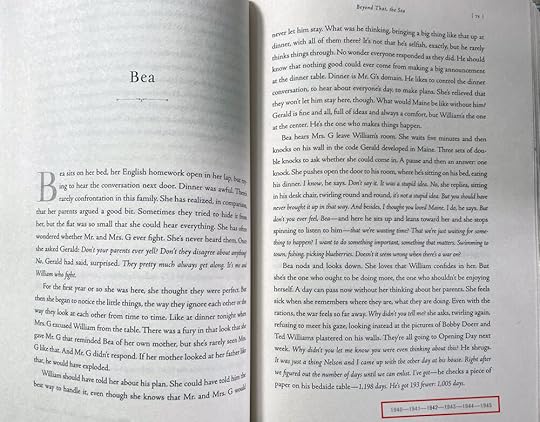 Writing Rules Broken, and it Works!
Writing Rules Broken, and it Works!Another design oddity that I quickly stopped thinking about was that all dialogue is in italics—and often, two separate speakers are included in the same paragraph. Somehow it keeps the dialogue soft, as if everyone is whispering to each other, which made me feel closer to the characters. And only once or twice did I have to reread a section to figure out who was speaking. Here’s an example of how this works, pulled from a scene on Thanksgiving Day, 1940; Beatrix is learning to rake leaves with both of her new American “brothers,” and she asks William (who’s two years older) about his favorite part of the holiday:
The cousins? The food? The thanks? The Thanks. He’d never thought of it like that. The thanks part of the holiday. It was a day, a nice day, to get together with everyone. A day when Father was too distracted to be annoyed with him. But he wasn’t sure his family felt thankful. Mother’s family had been here forever, with ancestors dating back to the Mayflower. Probably some of them were at that first Thanksgiving. Should they feel more grateful than they do? He’s never really thought about it before. But now, with Beatrix, he wonders. Maybe his image of her apartment [in London] is all wrong.
Yes, he says. The whole thing. You know, the breaking away from the British thing. The thanks that we have our own country. He grins at her, and she rolls her eyes. Can’t wait to see what happens on July Fourth, she says. I’ll probably be tarred and feathered and thrown in the harbor. Oh, we’re planning it, William says…
By my own rules for writing book reviews, I need to come up with a criticism of the story or writing or at least find a few typos… but the only small issue I can think of is that late in the book, I was surprised by the too-quick handling of what seemed like a pivotal moment. Now that I’ve looked back at the prologue, I realize that it’s that very scene—which means that I should’ve remembered it. Ah well, I was too busy devouring the beautiful writing while watching the characteres grow and stretch and change, something the author can surely appreciate; in the Literary Hub Q and A, Spence-Ash says she loves writing critical essays because they give her time to reflect on someone else’s writing. “Too much of the time, I’m reading quickly, and I don’t slow down enough to really consider why and how something works.” Exactly!
This book is that rare combination of well written, carefully edited, and beautifully designed. While it’s especially recommended for historical fiction lovers who appreciate strong and spare writing, I don’t think any fiction fan would be disappointed. And I can’t wait to read Laura Spence-Ash’s next novel!
Got a book you just know I would enjoy? Share it in the comments below, or send me an email. I read every single one of your responses, with gratitude.
The post Book Review: Beyond That, the Sea appeared first on Carol Newman Cronin.
May 25, 2023
Eight Bells: Kathleen Kirk Newman
This weekend, we’ll celebrate my mother’s long and happy life. I must admit I wasn’t sure if I should write an Eight Bells for her, but I finally decided to do so; it is both the best tribute I can think of, and a way to help say goodbye. She was, after all, my very first mentor—even if I never thought of her in those terms.
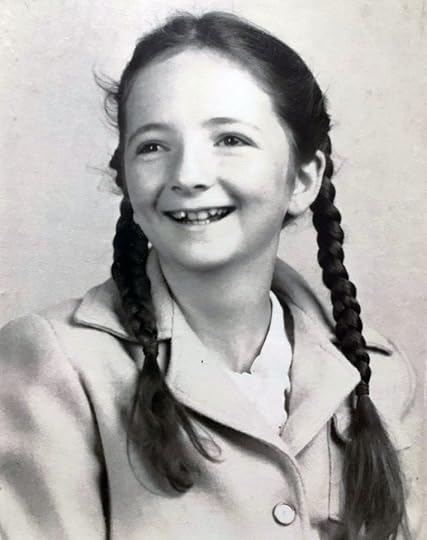 Farm to college
Farm to collegeThe woman who gave birth to me was born in the winter of 1935 and grew up on a small dairy farm in Pennsylvania. An unexpected opportunity to attend a private high school in her junior year introduced her to my father, who had also transferred there as a junior. Many of their dates were interrupted so Dad could call his father, who was about to buy the family’s first cruising boat. As Mom waited patiently outside the phone booth, perhaps she was mentally preparing herself for the endless boat discussions to come over the next seven decades?
After high school, Mom went to the University of Pennsylvania and Dad headed to MIT. Mom told me once that they promised to date other people, but that “it never really took.” They got married a few days after her college graduation and honeymooned in Maine on that same family cruising boat. Mom was new to sailing, but when Dad failed to make it back on board after pushing the boat off a dock, she somehow managed to navigate back solo to pick him up. She’d later joke about whether returning had really been the right call…
Building a family, and a boatMom supported her graduate-student husband as a payroll clerk until shortly before she gave birth to my brother. She later worked as a librarian and also did a lot of volunteer work, though her first priority was raising three kids. Our family’s first cruising boat arrived the same day I was born; Mom would frequently quip that both of us were “grossly overdue.” They took me for my first sail at ten days old, and the five of us enjoyed lots of family time on that boat for the next several years.
On February 7, 1970, my mother’s 35th birthday, a Morgan 38 hull and deck showed up in the backyard. The name Katrina is a derivative of Kathleen, the boat is still in the family, and Mom often referred to her as “your father’s mistress.” In her first decade, Katrina won a lot of trophies with a mostly family crew; we also cruised to Maine each summer.
Transatlantics, one at a timeIn 1981, my parents sailed Katrina to Europe with three other crew; I’m sure even Mom didn’t quite believe Dad’s initial suggestion that they would eventually ship the boat home. Five years later, I joined them for their second Transatlantic. Even in the roughest weather, Mom would strap herself into the galley to prepare a hot meal every single night. And even though I was a know-it-all 22 year old and Mom and I joked about spending “quantity time” together, I don’t remember any significant disagreements.
After they both retired, Mom and Dad moved full-time to Woods Hole. In one memorable calendar year, they covered the entire East Coast (from the Dry Tortugas all the way to the Canadian border) without spending a single night at sea—on a boat that rarely exceeds six knots.
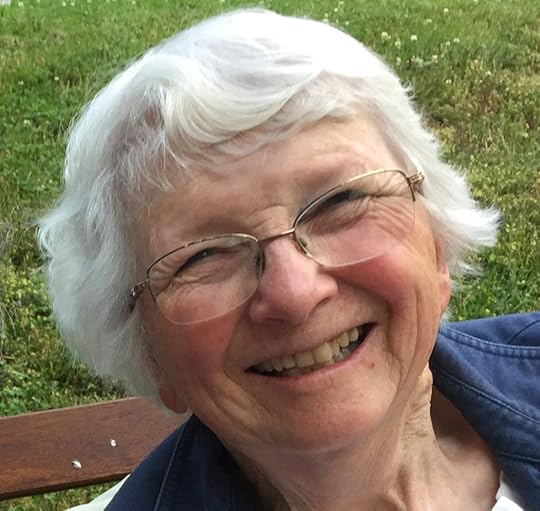 Continuing to cruise
Continuing to cruiseAfter Mom was diagnosed with ovarian cancer at the age of 80, she and Dad still managed a few weeks of cruising in Maine almost every summer. She was always the first to email me if I was at a regatta and results weren’t posted promptly. And even once her short-term memory was put out to pasture, she held onto her trademark dry humor. A few months ago, when I shared the sad news of a friend’s divorce, she told me that she couldn’t remember ever seriously considering that option herself—before adding: “But then again, my memory’s not so good.”
Thanks Mom for, well, everything. And even though I need to end this post, I’m not actually going to say goodbye—because you’re still here, in all of us.
The post Eight Bells: Kathleen Kirk Newman appeared first on Carol Newman Cronin.
May 18, 2023
The Surprising Power of a Handwritten Letter
A few weeks ago, I reached into our mailbox and found a surprise: a square blue envelope with the return address of a former teammate. I opened it right away, because I was quite curious about why she was reaching out; we don’t see each other very often, and I’d recently stopped by for a visit so I figured we were all caught up.
Turns out, she was writing just to say how much that visit meant—which, in turn, reminded me how special our hour together had been.
I’ve been thinking a lot about the power of letters, because they play a role in my WIP. While trying to determine whether those fictional epistles will survive the final edits, I’ve realized that the most touching letters are a unique combination of content and presentation—which is actually true of all thoughtful writing.

So, before I added this new addition to my memento drawer, I took a few minutes to admire and read through some of the other cards I’ve received. Here are a few highlights: a note that arrived just after the COVID lockdown, when we were all so desperate for any “normal” communication. The passing of a good friend’s father. And what might be my favorite of all time: an unexpected thank you note from an “insta-like” connection. That one brought back our single chance meeting so perfectly, it was hard to be believe ten years had already rushed by.
Then there’s the friend who sends a hand-drawn card each and every Christmas, always with a thoughtful note of explanation about what inspired the drawing; I’ve saved every single one.
My favorite epistolary novel is The Guernsey Literary and Sweet Potato Pie Society, and I’ve always wanted to write a book that tells a story entirely through letters. But I’ve never figured out how to keep that story moving forward inside a “letter-y” voice. And now that emails have taken over as my primary form of communication, that approach only seems less and less possible.
I am also absolutely sure that emails won’t ever have the same impact as the mystery and appeal of a handwritten envelope.
Reaching out by actual mail always seems like such a small thing when I’m the sender, but as the recipient I consider it a very special token of friendship and remembrance. So thanks to my former teammate for sparking this post—and to all of those other thoughtful friends and family members who’ve taken the time to dash off a few thoughts, address an envelope, adhere a stamp, and send a small envelope winging off to me so I can ponder for a quick moment what might be sealed inside.
What about you, do you save cards received from friends? Share your thoughts in the comments below, or send me an…. email. I read every single one—even though they’re not handwritten!
The post The Surprising Power of a Handwritten Letter appeared first on Carol Newman Cronin.
May 11, 2023
One (Weatherproof) Way to Experience The Ocean Race
Are you looking for a way to get out on Narragansett Bay and watch The Ocean Race InPort Race May 20, or the restart May 21 when these exciting boats head across the Atlantic? If so, please consider joining me onboard the Coastal Queen, the largest of the Jamestown Ferries, where I’ll be doing live commentary. I’ve done this only once before, for the start of the 2022 Newport to Bermuda Race, and it was surprisingly well received. Based on previous experience, I’m sure The Ocean Race events will be even more fun (for all of us).

The first two finishers of what is basically the world championship of ocean racing arrived yesterday afternoon, and Paul and I went down to watch from the shoreline. The boats are quite different from 2018, but the Bay was just as crowded with the welcoming fleet.

In 2018, Paul and I were lucky enough to join our friends on their 42-foot cruising boat for the In-Port Race of what was then called the Volvo Ocean Race. It was pouring rain, so we were very glad of their bimini and dodger—and I felt sorry for all the folks who were sitting in less protected cockpits. Rhode Island weather can be quite iffy in May, but there is usually good breeze—so this year, we may even get to see the boats foiling!
No matter what the weather brings on that special weekend, I’m again planning to stay dry since the Coastal Queen’s upper deck is fully covered. The lower deck is enclosed, and all of its ADA-compliant seating gives a water view on one side and access to the bar on the other.
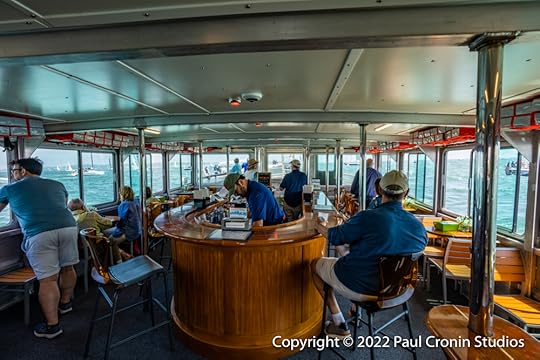
The Ocean Race is one of the toughest sailboat races in the world, and for two short days it’s all coming to you live and in-person from Narragansett Bay! Helping spectators understand what’s going on will give me the perfect excuse to dive even deeper into this spectacular stopover, because that’s the only way to convey the unique accessibility of our sport: I get to share with you the excitement of watching friends and acquaintances from around the globe push both themselves and each other before they head off across the Atlantic.
If you do want to join me, make a reservation (you may have to scroll down past Coastal Queen’s many other cruises). I look forward to seeing you onboard! And who knows, I might even manage to work this experience into a future novel…
The post One (Weatherproof) Way to Experience The Ocean Race appeared first on Carol Newman Cronin.
May 4, 2023
Learning to Love Typos in the World of AI
For better or worse, I’ve got a very sharp eye for the text errors known as typos—even the tiny ones that most readers will never notice.
This sharp eye is “better,” because it helps me be a good editor; I never deliver typo-strewn stories or manuscripts. But it is also “worse,” because it makes me a very persnickety reader; instead of losing myself in the “forest” of a good story, I get distracted by the equivalent of a tiny insignificant hole in one single leaf at the top of a distant “tree.”

Over the years, I’ve learned to identify some common reasons and patterns for typos, including:
Spell checker syndromeThese are words that actually exist but are not used in the correct context, so only a human eye (or a smart bot) will catch them. E.g., I went fort the chicken parm. (These days, Google will suggest a correction.)
Homophone hardwireSometimes I catch myself writing “bear” when I mean “bare” or “write” when I mean “right.” Any neuroscientists out there who can explain what must be a hard-wired connection between our listening and writing brains?
Simple letter reversalsI type “teh” more often than “the.” This is such a common personal error that my text message app now suggests it as a “correction…”
Typos Make Us HumanSuch tiny errors are the result of fingers choosing the wrong keys on a keyboard, a very human and very mechanical failing. So, now that we’re all worried about ChatGPT and other AI “authors” taking over, I’m going to adopt a different attitude altogether: Typos Are Human. The next time I spot the wrong word in someone else’s novel, I’m going to try to skip right over my knee-jerk “I can’t believe the editor didn’t catch that” and instead appreciate the actual imperfect writer who mistyped a word. Let’s celebrate our error-prone humanity, as well as the joy of getting so caught up in the forest of a unique story that we don’t even all those leaf-holes!
Frankly, I’m not sure this attempt to change my long-time habits will work, and it will of course bring about its own “better” and “worse;” I can already imagine a flurry of comments about the sad decline of my writing and editing standards. Otherwise, what do you think? Will typos become less of an annoyance and more an important detector of AI/BS going forward? Do they distract you too? Let me know in the comments below, or send me an email. Maybe together, we can forge a new path in this brave new writing world.
The post Learning to Love Typos in the World of AI appeared first on Carol Newman Cronin.
April 27, 2023
The Best Wingfoiling is Right Now
This year, the sailing season on Narragansett Bay is starting a bit earlier than usual—thanks to wingfoiling, and my first new wetsuit since 2011. We’ve already been out several times, and I’m loving the combination of cool/cold water and steady breeze. I’m even jibing reliably, something I could only dream about when we ended last year’s season!
So, just in case you’re considering joining the fun, here are 5 reasons to start winging as soon as possible this year—even though it requires wearing boots.
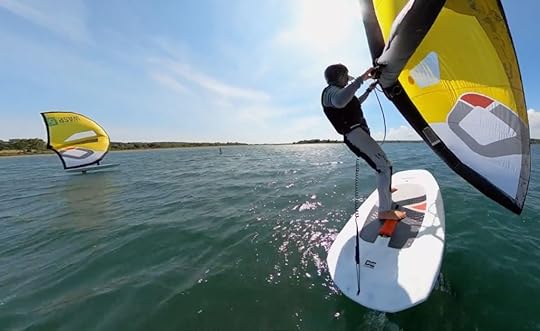 No bare feet yet, but the season’s definitely started! Screengrab courtesy PaulCroninStudios1. Cold air is denser
No bare feet yet, but the season’s definitely started! Screengrab courtesy PaulCroninStudios1. Cold air is denserWingfoiling is a literal Goldilocks balance between too much sail area and not enough, and denser air makes it possible to achieve liftoff with a smaller wing. Smaller wings are both lighter and have a shorter wingspan. And if you think about the geometry of a wingtip speeding along just above the surface, you’ll understand how significant a few inches can be in the battle to avoid a “digger.”
2. The air is warmer than the waterIn the fall, when the water is often warmer than the air, the breeze skips up and away from the surface rather than attaching to it. This time of year, the breeze is much steadier within what physical oceanographers call the boundary layer. And when you’re skimming along just above that boundary at a similar speed to the wind, such details make a noticeable difference.
3. The harbor is still mostly emptyMost boats haven’t been launched yet, which means a lot more open acreage for wingfoiling.
4. You can pick your weatherWith boards stored in the van (and not in need of any varnishing or painting), it’s easy to just GO whenever wind and work allow. Also, beach parking is easy this time of year.
5. It feels really CLEANSING!There’s something about walking (or falling) into cold salt water that makes me feel very healthy and clean. I’m not (yet) ready to join the crowd that swims year-round, and I’m definitely appreciating my new wetsuit (turns out neoprene technology has come a very long way in the past decade), but I now have a fresh appreciation for the benefits of cold-water swimming.
Have you started your sailing season yet? Share your excitement in the comments below, or send me an email. I read every single one, with gratitude.
And because I know you’re curious, here’s
What I’m wearingO’Neill 4/3 wetsuit (with full arms and legs)Showers Pass socks Gill sailing boots, circa 2002 (also used for winter SUP adventures)Zhik impact jacket and helmetPrevious posts and videos about wingfoilingVideo: The Jibes and Falls of Wingfoiling
Wingfoil Video: Make Like a Harbor Butterfly
Breakthrough Days Make all the Slogging Worthwhile
6 Valuable Lessons from Learning to Wing Foil
The post The Best Wingfoiling is Right Now appeared first on Carol Newman Cronin.
April 20, 2023
Writing Reflections: The Magic of Subtext
I was watching the latest episode of a favorite TV show a few weeks ago when it struck me: how often the most intriguing characters are ostensibly talking about one thing, but are simultaneously and silently discussing something deeper and far more difficult. Writers (and psychologists) call this subtext, and once I started really paying attention I noticed it lurking everywhere—even in the cheesiest soundbites.
 How to get it on the page
How to get it on the pageSubtext in novels is like a sunrise on the water; the light actually comes from the sky, but it’s the reflected colors that convey the richest texture. I could go “deeper” with this analogy, but I think I’ll stop there… and try instead to describe my own development process.
Subtext can work on the page even when characters are alone, thanks to the entwined magic tricks of inner dialogue and authorial voice. Most of my favorite books include scenes that operate at more than one depth; there’s what’s actually happening, what’s being not-said, and maybe even an additional “truth” that rises out of the interweaving of the two.
Of course this is very, very hard to get right, because if the various layers don’t tie together for the reader the result will be schizophrenic confusion rather than deepened clarity. And it shouldn’t ever be forced. For my own writing, that means subtext either appears in the first draft… or probably shouldn’t ever be included in that particular scene.
The character in Ferry to Cooperation Island who most inspired subtext was Mavis. There was always a great deal more going on inside her head than what actually came out of her mouth; perhaps that’s why so many of you want to hear more about her in the next book. That’s definitely why she’s one of my own favorite characters, and why (you’ll be pleased to hear) she’s such a prominent part of the sequel.
An example of subtextThe first time we met Mavis, she was rockhopping up the bluff right near her home; both for some much-needed aerobic exercise, and as a tribute to her dying brother, Joe (who had taught her the childhood tricks of safe rockhopping). Halfway up, “A fragile edge of rock broke off under her right foot. For a moment Mavis thought she’d fall, straight down onto another sharp piece of ledge ten feet below. Instead, without thinking, she righted herself and kept climbing.”
Getting the balance rightI wrote that description in the book’s very first draft, but it was only after many, many revisions that I realized how significant this small act of saving herself was to Mavis’ story. At this key moment, she herself doesn’t realize what she’s done; it’s only toward the end of the book that she begins to understand her own innate ability to “right herself.” That’s why it’s such a great example of subtext; the underlying not-said piece should never be obvious, even to the character herself. And that requires consciously balancing what’s actually on the page with what’s left to the imagination—and then trusting the reader to tie it all together.
Mavis continues to inspire and surprise in the sequel, and I look forward to ferreting out gems like these from the current hot mess of a first draft—though it will take me many more sunrises to do so. Meanwhile, do you have another example of subtext, either from a screen (big or small) or a favorite novel? Share it in the comments below, or send me an email. Your thoughtful replies continue to inspire, so thank you!
P.S. Words can have subtext all on their own; read Draft: Shallow or Deep? and Writing and Editing with Latitude
The post Writing Reflections: The Magic of Subtext appeared first on Carol Newman Cronin.



